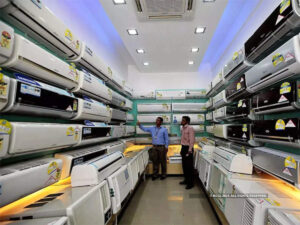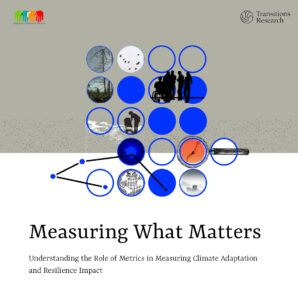Introduction:
Seema, a teacher in a tier 2 city of India, has been frustrated with the way the city administration continues to drag its feet on pollution of its river in the city. She wants to convert her frustration into change and advocate for clean ecosystems in her city, but she lacks the avenues to do so – the administration is top-down and technocratic, with little motivation to engage with concerned citizens like her. She is mostly angry and involved in protests and writing appeals to authorities which almost always yield no results. She has tried to volunteer with local, national and international NGOs working in her city in the hope that at least one of her engagements will bring about change.
The name of the city in Seema’s story is not important because this is the story of most cities in India. Citizens like Seema are always searching for that one government officer or politician who acts as a champion through individual political will and makes sweeping changes to the city’s infrastructure, but lasting governance changes are slow and hard to come by in a complex context like Indian cities. Climate change adds an additional layer of complexity to the urban dynamics of Indian cities that are already trying to address haphazard growth, colonial laws and environmental degradation. These conditions have left the government and citizens alike to look for ways to form boundary institutions, platforms and alliances that can innovate, provide solutions and bring lasting change in cityscapes of the country.
Urban Living Labs: A New Approach
Urban living labs (ULLs) have emerged, particularly in Northern Europe, as a new way to address complex urban challenges and test socio-technical innovation in the ‘real life’ laboratory of the city. ULLs have been institutionalised to experiment with innovation and test solutions to diverse challenges ranging from urban mobility to climate risks at a manageable scale of a neighbourhood or small city. For example, in Denmark, the Climate Adaptation Living Lab (CALL) in Copenhagen has been established specifically to support the development and mainstreaming of climate adaptation solutions.
To test innovation in building resilience, CALL developed an institutional framework for bringing together diverse stakeholders who traditionally work independently of each other. By creating a common goal of building water resilience for Greater Copenhagen, CALL was able to create a mechanism for joint decision making to tackle geographically rooted water challenges such as sea level rise and changing precipitation patterns.
The success of innovations from Labs in the Global North has also galvanised momentum for developing living labs in cities in the South: The Project Urban Living Lab (PULL) in Panaji, India was recently created with the objective of enabling climate adaptation and resilient urbanisation. By partnering with the local Smart City Special Purpose Vehicle, namely Imagine Panaji Smart City Development Limited, PULL has been able to convene government departments and engage with local residents, businesses and tourists to incubate new solutions around sustainable mobility, urban flooding and data driven governance.
Can they work in the context of messy urbanisation?
The appeal of urban living labs, especially in cities that are experiencing rapid and messy urbanisation in the global South, is their ability to disrupt the obduracy in current decision making processes and incubate solutions. ULLs provide a new, innovative institutional framework for climate adaptation planning, governance and decision making that challenge the highly centralised governance structures that limit cities’ ability to and plan for climate risks.
Last month, Transitions Research and the Global Resilience Partnership (GRP) organised a dialogue to both examine their utility in building resilience and supporting planning efforts and also interrogate their applicability and role in addressing climate change in the context of growing cities in the global South. The dialogue featured the experiences of both CALL and PULL as well as research on urban transitions and governance focused on informalit
The experiences and research from our distinguished panellists highlighted the multifarious potential of urban living labs in all urban contexts: Mr. Soren Heinecke from CALL discussed the value of living labs in testing solutions through pilots and demonstration projects, such as a participatory tool that demonstrates how drone and GIS technologies can be combined with modern didactic methods to support co-creation of planning solutions with citizens; Dr. Vikrom Mathur from PULL highlighted the importance of ULLs in supporting research and data generation as the project was able to create data for flood management in Panaji. Both Labs also showcased the power of ULLs to break down fragmented governance and bring together government and non-government stakeholders to share knowledge and improve planning.
However, ULLs as a framework to disrupt planning and governance must be contextualised to incubate innovation in the Global South. Mr. Heinecke strongly emphasised the need for public funding to sustain these Labs. However, limited devolution of financial power in cities in India limits the ability of local governments to mainstream Labs as a boundary institution. Similarly, Ms. Neha Mungekar’s research on transformative and reparative urban transitions underscores the importance of incorporating informality in governance; something living labs are yet to do.
Way forward for ULLs and Indian cities
Whether in the Scandinavian or the South Asian context, the role of boundary institutions like the ULLs continues to evolve. Issues of finance and scale remain looming questions – is the public or the private sector a panacea for funding? Can we have blended finance models for funding innovation? What does scale mean for an institution that is meant to act as a test-bed for innovative solutions to urban challenges?
As experts grapple with these questions, citizens like Seema and urban government officials continue to make incremental, reparative, changes through informal and formal means – through flash protests, social media petitions and litigation – their impatience to see change palpable in their efforts. For many others who remain marginalised and relegated to informal spaces within these cities, the simple yet highly arduous act of living is often an act rooted in resilience. ULLs and other approaches that focus on changes in governance in the city might do well to offer a space to the coalitions, movements and networks that have emerged through the constant negotiation of informality in the cities of South Asia and the Global South.
Learn more about Project Urban Living Lab on GRP’s Resilience Platform and at the project website.
Photo by Setu Chhaya on Unsplash




